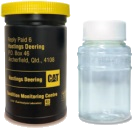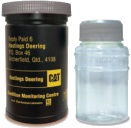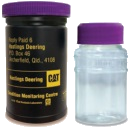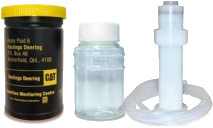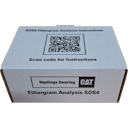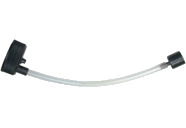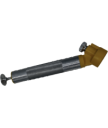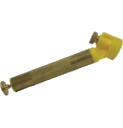Particle Counting
Keeping your fluids clean can improve component life. Particle counting is a quick way to quantify a large variety of potential contaminants in a fluid. Particles such as coal, transmission friction material and other non-metallic particles will not be detected by elemental spectrometric analysis. We can test samples from clear synthetic industrial fluids and new oils, through to heavily sooted diesel engine oil samples.
We have a range of particle counting methods available depending on the sample you are testing. Our methods range from simple comparative patch testing through to state of the art laser particle counting and scanning electron microscopy for more exacting applications.
Automatic (ISO 11500)
Automatic particle counting systems rely on detecting particles by using a light obscuration system. A focused beam of LASER light illuminates the sample. Particles in the sample block a portion of the beam falling on an electronic detector which are then counted as electronic pulses proportional to the size of the particles and the numbers present.
Automatic particle counters provide a rapid analysis with good reproducibility, but they may be prone to interferences by certain oil additives, water droplets and entrained gases.
This method is calibrated using ISO 11171 and reported with the ISO 4406 convention.
Automatic particle counters provide a rapid analysis with good reproducibility.
S.E.M.
The scanning electron microscope (SEM) comes with advanced software to categorize particles in terms of size and composition which enables the reporting of the particle count to any chosen standard.
One advantage of this method is that it can be done selectively on any particle composition. eg. Counting only the molybdenum particles present in a sample. Another advantage is that thousands of particles can be counted in the time it would take a human operator to count a few hundred, which greatly increases the precision of the measurement.
The disadvantage is that the SEM detector is not as sensive to some non-metallic particles such as polymers and fibres. Testing is also more expensive due to the more complex sample preparation requirements.
Manual (ISO 4407)
For manual particle counting, a measured volume of the sample is filtered through a gridded membrane filter. The prepared filter is then examined by an operator using a light microscope who then counts the particles in the specific size ranges over a known representitive area. The count is converted to particles/millilitre based on the volume of the sample and the area counted.
The advantage of manual particle counting is that the operator can determine the composition of the particles during the analysis. The disadvantage of this method is that the test is very time consuming and requires a specially trained operator.
Comparative Patch
Comparitive patch testing is a relatively quick method of estimating the ISO cleanliness code of a sample by filtering a standard volume of sample through a specified filter membrane. The resulting filter is then photographed at 100x magnification and compared to a series of published photographs of known cleanliness.
The advantage of this method over others is that results are achieved relatively quickly and at low cost. The disadvantages are that it is a subjective assessment by an operator and relies on standard images which may not accurately reflect the individual samples.
